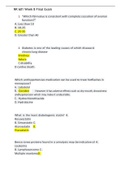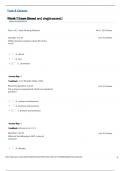Essay
Unit 8C applied science DISTINCTION
- Institution
- PEARSON (PEARSON)
This assignment got me a distinction, it is very easy to understand and will give you a distinction also, so use it as a reference. Message me if you need anymore help!
[Show more]












